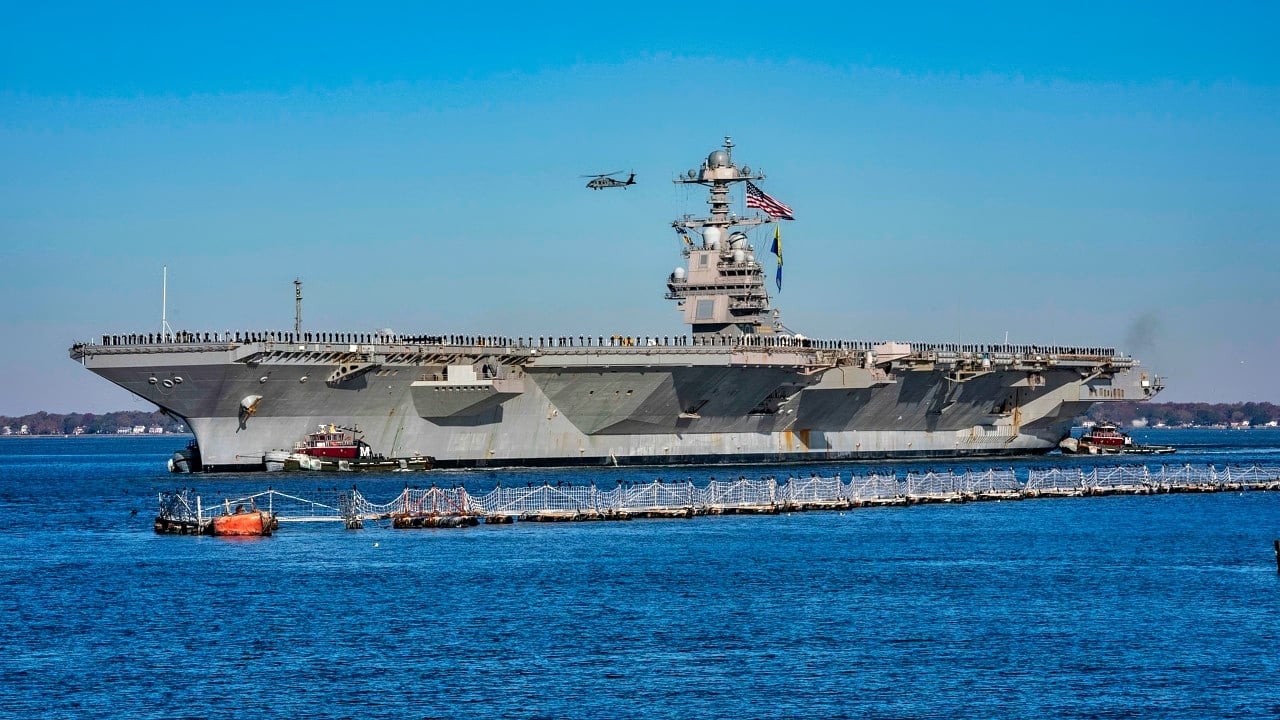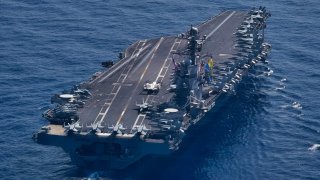The U.S. Navy's New Ford-Class Aircraft Carrier Will Be 'Delayed'
The USS John F. Kennedy (CVN-79), the second Ford-class aircraft carrier, is nearing fleet readiness but has faced multiple delays. Originally expected in 2022, the carrier is now slated for delivery in 2025 due to construction and capability upgrades, including retrofitting to support F-35C Lightning II stealth fighters.
What You Need to Know: The USS John F. Kennedy (CVN-79), the second Ford-class aircraft carrier, is nearing fleet readiness but has faced multiple delays. Originally expected in 2022, the carrier is now slated for delivery in 2025 due to construction and capability upgrades, including retrofitting to support F-35C Lightning II stealth fighters.

-Once operational, the Kennedy will join the Pacific Fleet to bolster U.S. naval presence in the Indo-Pacific amid growing tensions with China.
-The ship’s advanced technology and enhancements are expected to provide a critical boost to U.S. naval power, continuing the transition from aging Nimitz-class carriers.
USS John F. Kennedy Delayed Again: What’s Holding Back the Navy’s Newest Aircraft Carrier?
The Ford-class carrier is a technological marvel. Featuring updates systems and heavy automation, the Ford is arguably the most advanced naval vessel ever built. But as one might expect, crafting the most advanced naval vessel ever built can be fraught with growing pains, namely, cost overruns and schedule delays.
To date, only one Ford-class has joined the fleet, the namesake USS Gerald R. Ford. The second Ford-class, the USS John F. Kennedy, was supposed to be delivered this year, but has been delayed. Delivery is expected sometime next year, however.
Introducing the John F. Kennedy Aircraft Carrier
The Kennedy is almost fleet ready, and when she is, she will join the Pacific Fleet. The addition of the Kennedy to the fleet will allow the Navy to continue phasing out their Nimitz-class carriers, which are rated for fifty years of service, and are indeed approaching the half-century mark.

The Kennedy was supposed to be deliver last June. That didn’t happen.
According to the U.S. Naval Institute, the delay happened “so the service could alter the ship’s Post Shakedown Availability (PSA) and perform more work during construction.”
Whereas the Navy’s own budget documents explained that “the Navy is implementing a strategy to pull baseline work from the Post Shakedown Availability (PSA) into the construction period to provide more capability at ship delivery.”
More capability at ship delivery is a good idea, the Kennedy is designed to offer an immediate boost to the U.S. presence in the Indo-Pacific, where the U.S. is increasingly concerned about a revisionist China.
Straight to the Pacific
The first Ford-class, the Ford, is already on station with the U.S. Sixth Fleet, in the waters of Africa and Europe. The Kennedy will be headed in a different direction, however, off the western coast of the U.S. mainland, to the Indo-Pacific, where she will be used to augment American power in the region.
The deployment to the Indo-Pacific is not just about geopolitics, but also about logistics; the Indo-Pacific deployment will, “decrease the amount of time [Kennedy] would be required to be at the shipyard after ship delivery to conduct the PSA.”
Originally, the Kennedy was supposed to join the Pacific Fleet in 2022. Then the delivery was pushed back until 2024. Then again, to 2025. Hopefully the 2025 delivery date is honored. The reason for all the delays, were capability upgrades; the Kennedy was not initially capable of fielding the F-35 C Lightning II. That was a problem.
Congress intervened, pointing out the absurdity of building a $13-billion aircraft carrier that was incapable of deploying a fifth-generation aircraft that the Pentagon had invested over $100 billion to create, with a not insignificant portion of the expense coming to create the C-variant, which is carrier-capable.
The F-35C is a stealth aircraft with an ultra-low radar cross section (RCS). Stealth technology promises to be vital in any conflict with China, who possesses sophisticated anti-air defense systems, which will make non-stealth penetration quite difficult, and will likely reduce the influence of fourth-generation aircraft, like the Navy’s F/A-18 Super Hornet.
About the Author: Harrison Kass
Harrison Kass is a defense and national security writer with over 1,000 total pieces on issues involving global affairs. An attorney, pilot, guitarist, and minor pro hockey player, Harrison joined the US Air Force as a Pilot Trainee but was medically discharged. Harrison holds a BA from Lake Forest College, a JD from the University of Oregon, and an MA from New York University. Harrison listens to Dokken.
Image Credit: Creative Commons and/or Shutterstock.


